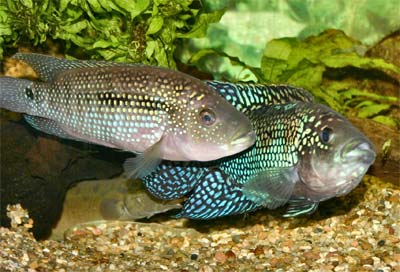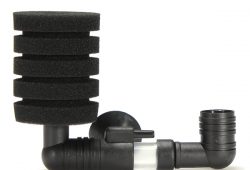Fish Breeding
Here Is Information Over Fish Breeding That You’ll Want To Take Note Of. One of the most challenging aspects to fishkeeping is breeding. Because of the limited space in most aquariums, most efforts fail due to the eggs or small fry being eaten by the parents or other inhabitants of the fishtank. This can be easily solved by providing seclusion or safe territory thru a separate fishtank or a net breeder placed inside the main aquarium. There is also different breeding equipment available to make this a most enjoyable event.

The first thing you will want to do is some research on the type of fish you are keeping and what their spawning requirements are. I can give some general guidelines, but all species are different and display separate behaviors. If you are serious about breeding, there are some things you must do to prepare your aquarium.
Your aquarium should be low stocked. A separate breeding aquarium is best. It should not have a powerful aquarium filter as it really won’t be needed and definitely not an undergravel filter. The newborn fry are very small and delicate and can be sucked into an aquarium filter very easily. A simple sponge filter is adequate. The water quality should be the same as the main aquarium so as not to cause stress when moving the parent fish into the breeding tank.
Choose healthy fish that are free from disease and deformities and full of color with good fin structure. There is nothing sadder than culling (removing defective fry) after you have watched them hatch.
Each species of fish is different as far as breeding and spawning procedures. The following are a list of the different spawning behaviors:
Egg Laying Species: Zebras, Danios, Tetras, Killifish
The eggs are laid and then fertilized by the male.
Even these are divided into the following categories:
Contents
Egg Scattering Species:
These parents are not protective and will eat the eggs. You must separate them after spawning takes place. Put a layer of marbles on top of the substrate to allow the eggs to fall between to protect them. Provide thick branches or aquarium plants for eggs to adhere to (eggs are coated with a sticky substance). A Breeding Net or Baby Nursery will allow the eggs to fall through keeping the female away from them.
Egg Burying Species: You will need to provide a deep layer of peat on top of the gravel for fish to burrow into to bury the eggs. The parents are very protective of the eggs and fry. You will need to place rocks and caves to provide choice of spawning sites. After spawning, the peat (with the fertilized eggs) can be removed and stored almost dry for a few months. Hatching process is activated by placing the peat in the aquarium water again.
Nest Builder Species:
Fish will gather bits of plants. You need to provide a well planted aquarium for shelter after spawning. The parents will provide care for the eggs and fry.
Mouth Brooder Species:
These fish will build nests but use them mostly for courtship and spawning. Afterwards the female will gather up the eggs and hold them in her mouth and buccal cavity where incubation takes place. During this time she will want solitude and will not eat.
Egg Depositor Species:
Secretive spawners. Prefer privacy of a flower pot or cave. You may not know when spawning has taken place until the parents bring the young fry out into the open.
Bubble Nest Builder Species:
Includes Bettas (See Breeding Betta Fish Page) and Gouramis.
These fish use fragments of plants along with a sticky mucus secretion to build a bubble nest. The female may be attacked by the male if he does not consider her ready for spawning. the best tactic here is to place both fish in a fishtank with a tank divider between them until she is ready.
Another way is to place the female in the tank first so she can establish her territory and then introduce the male so he has to court her in her territory. After fertilization and spawning, the male will gather the eggs up in his mouth and place them into the nest. The female should be removed at this point as the male will care for the eggs until they hatch. He will then herd them all together but soon will lose interest. He should then be removed as well.
Live Bearing Species:
Guppies, Platies, Swordtails and Mollies are a few of the most popular livebearers. At birth these fry are free swimming and you will need to provide an aquarium with lots of plants and hiding places as the fry will be eaten by either their own parents or other fish in the fishtank. After giving birth, the female should be allowed a few days rest before returning her to the main aquarium as they may have trouble coping with the ardent males after a time of confinement.
To increase your success with spawning, separate the male and female for a few weeks prior to spawning. Feed them intensely with a high quality food with live food predominating. This ensures the female will be full of roe when spawning time approaches. If she is considered unready, the male will usually attack her. To avoid this, introduce the male into the female’s territory or keep them separated with a tank divider.
Supervise the spawning to prevent the female from being attacked and harmed by the aggressive male. You may need to rescue her after spawning is complete.
Whichever species you decide to try your hand at, have fun and enjoy it. You will also want to take some photographs as the rituals of some of these species are fascinating to watch.



